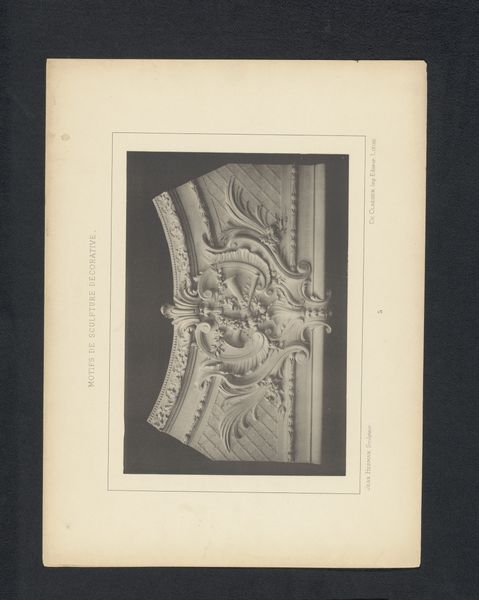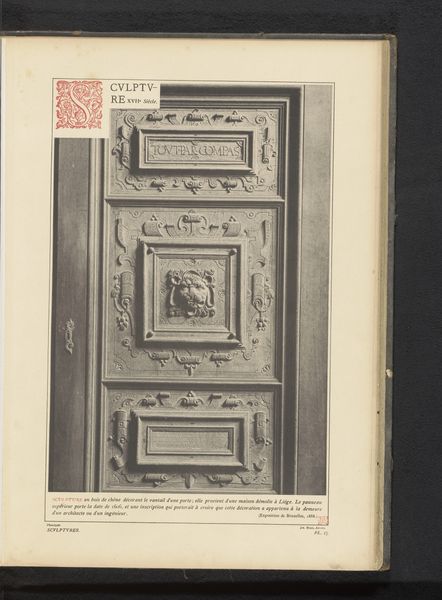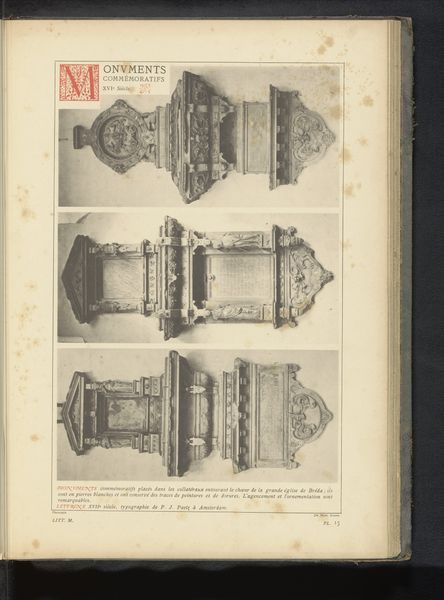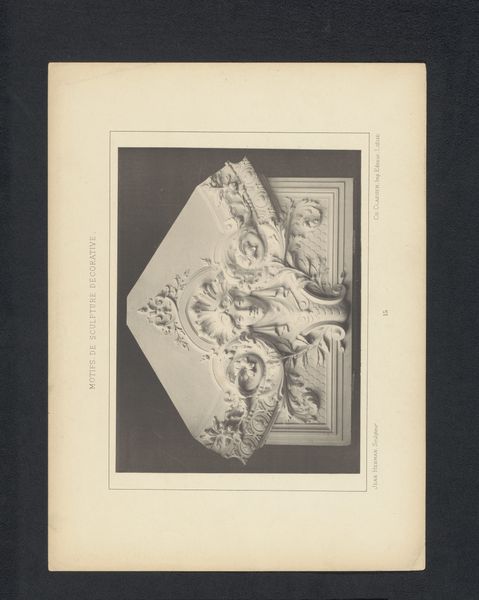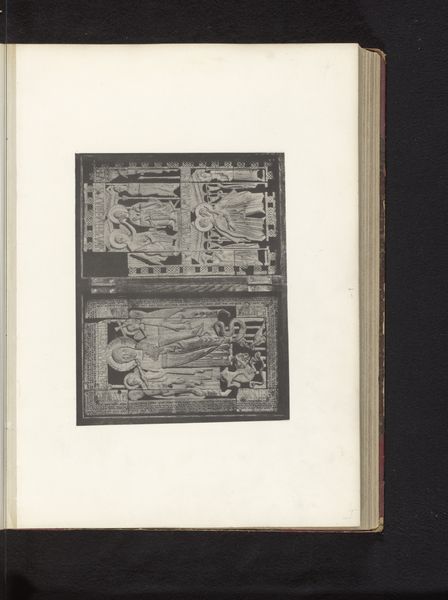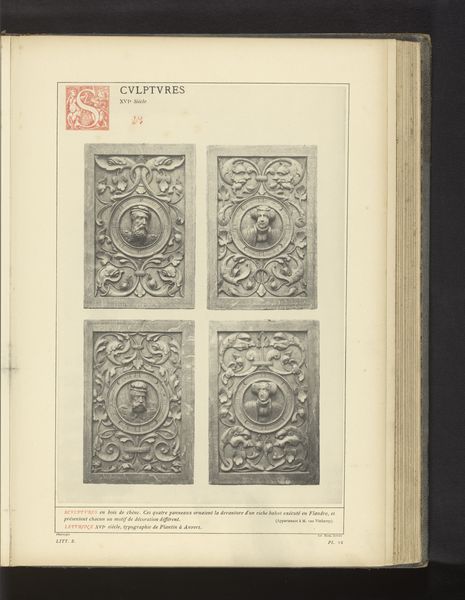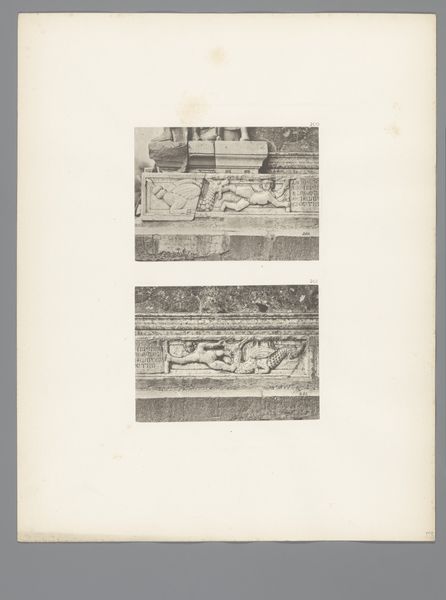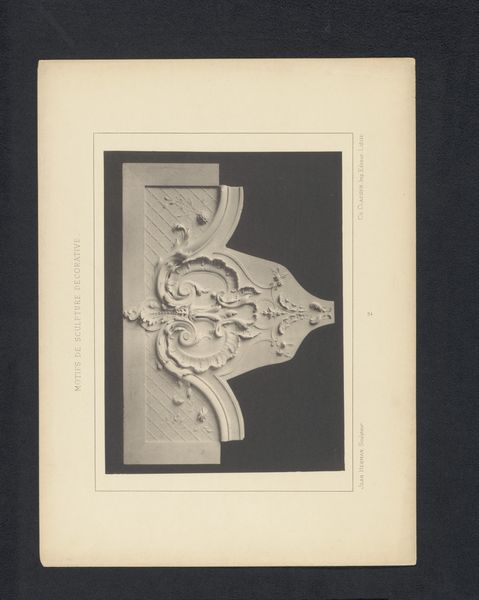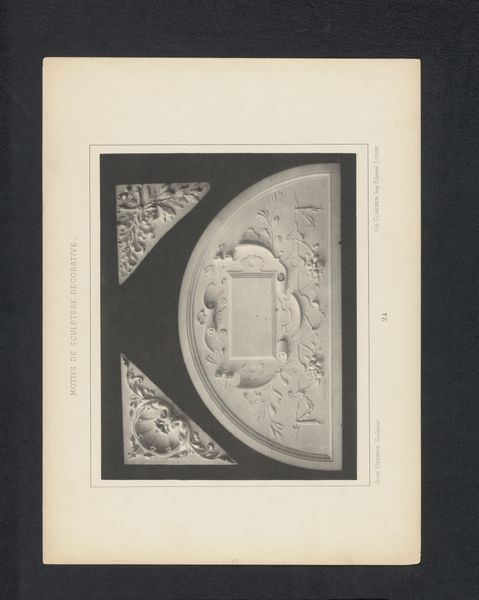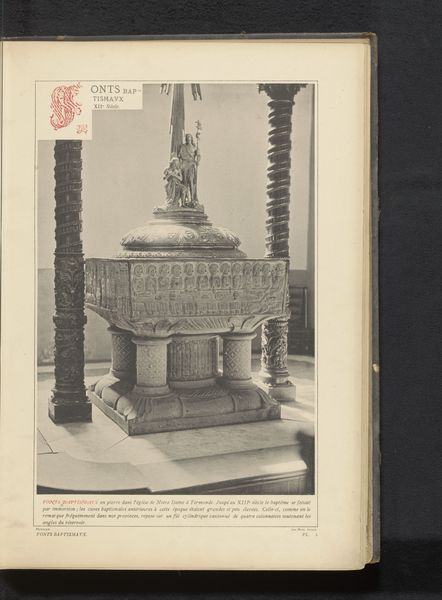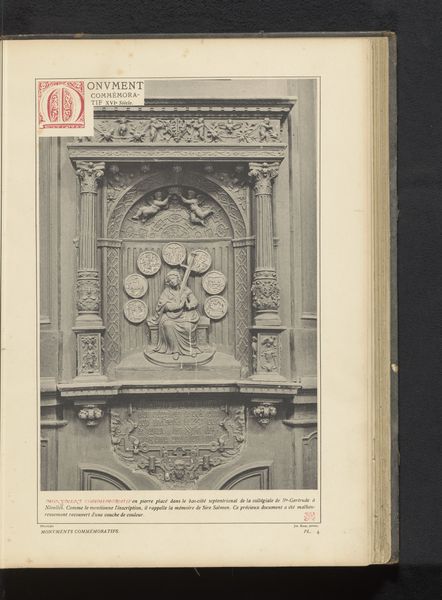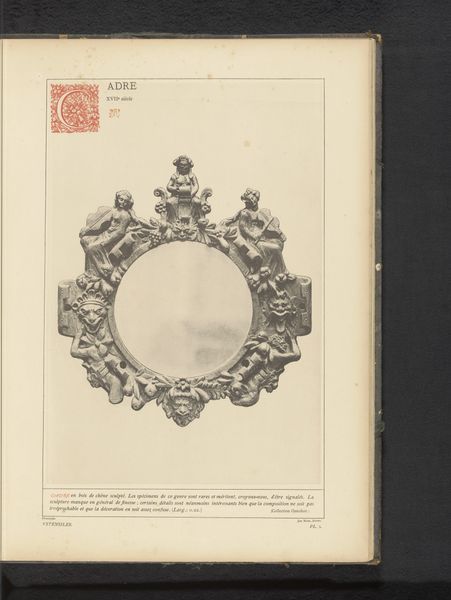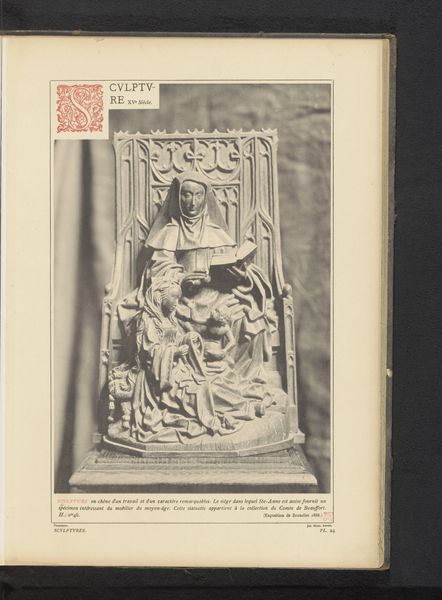
Gedecoreerde eikenhouten lateien, afkomstig van een afgebroken huis in Ieper before 1880
0:00
0:00
drawing, carving, print, wood
#
drawing
#
medieval
#
carving
# print
#
wood
Dimensions: height 335 mm, width 229 mm
Copyright: Rijks Museum: Open Domain
Curator: Looking at this page, titled “Decorated Oak Lintels, from a demolished house in Ypres,” evokes such a feeling of loss, of fragmented stories. Editor: Loss, definitely. It's like encountering ghosts from another era. The wood carvings are striking – I'm drawn to the playful expressions on those disembodied heads! What do you make of them? Curator: The carvings, probably made before 1880, present a powerful mix of architectural styles rooted in medieval sensibilities. Note the gothic details blending with what appears to be domestic scenes. These visual cues invite deep introspection, making us think about past inhabitants and their social fabric. Editor: Absolutely, I see a tension between sacred and mundane symbols. Speaking of those lintels… How would such carvings shape public life back in the day? Was this meant for a private dwelling or more of a civic display? Curator: Good questions! My read is that they served both functions. These pieces originated from a private residence, but the very act of carving these elaborate images turns the owner’s beliefs and aesthetic preferences into public narratives. Every element—the leaves, the fruit, and the human-like figures—participate in an extended symbolic conversation. Editor: It's fascinating how such intimate carvings transformed the streetscape. I'm interested in the oak itself. Given oak’s longevity, do you feel it imbues the images with authority and resilience, adding a layer of respect to what is being depicted? Curator: Most definitely. The material acts as a cultural transmitter. Carving these figures into oak does more than simply decorate a facade. These emblems ensure the story will linger longer—adding significance and impact on the human psyche. The choice of oak grounds those domestic details in something permanent. Editor: So, what we have here is not just decor. The print of woodcarvings is a curated collection of artifacts, a glimpse into lost lives, immortalized in visual stories! I like how it encapsulates fragments, whispers from a world that is irrevocably gone. Curator: Precisely. Each curve and incision narrates an untold story, reminding us of the human need to preserve moments—transforming everyday objects into testaments of memory and heritage.
Comments
No comments
Be the first to comment and join the conversation on the ultimate creative platform.
